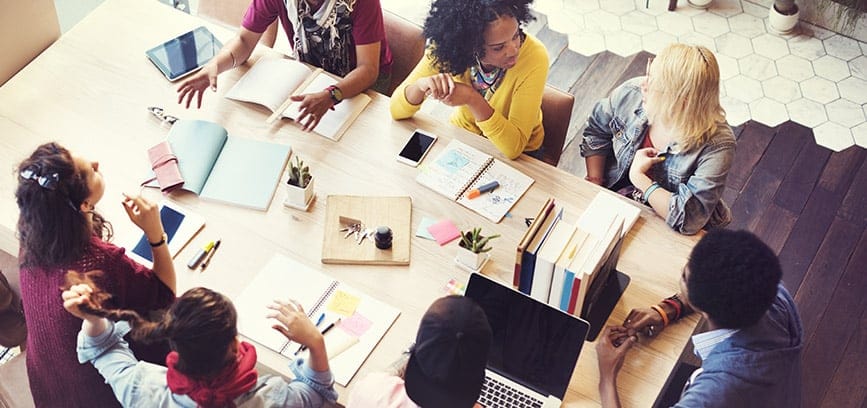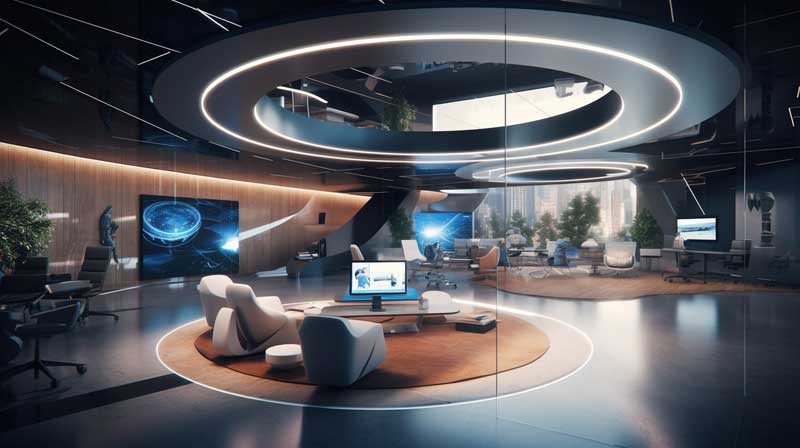Workplace Strategy Interview: Future of work in Australia (Part 2)
This post is the second in a series. Please read Part One first to understand what’s happening with the way Australia works.
As we learned in Part One of this series, the war for talent is very real, and the complexity and confusion around 457 skilled visas in Australia are not helping. Big international tech companies are consuming local talent and paying above odds on wages plus offering highly desirable employee benefits. And there is currently no national conversation occurring about the future of work in Australia and how to prepare for it.
However, the private sector is beginning to respond: in 2019, Telstra announced a huge $25million upskilling and reskilling program in collaboration with Sydney’s University of Technology.
So what can your business do to attract and retain talented, productive and forward-thinking employees? And beyond this, how can you future-proof your workplace? Your workplace strategy is an excellent place to start.
Start by getting to know your employees
Understanding the context around your current and prospective employees is crucial in developing a workplace strategy which suits their requirements and satisfies their health and wellbeing needs – so they can be the best employees possible.
Future of Work strategist Cindy Lenferna de la Motte recommends considering how your employees are feeling:
- Anxious about whether a job exists for them in the future
- Stressed out living in a share house or overwhelmed by household debt (maybe both)
- Tense and worried about the climate crisis
- Concerned about failure/change/isolation/etc
Cindy says a workplace can act as a ‘release valve’ for employees, so consider how your workplace can alleviate the fears and anxieties your employees have, freeing them to be efficient, productive and happy at work. Some examples include:
- Supportive leadership that provides a future vision, encouraging co-creation and collaboration
- Investing in professional development
- Quiet spaces for ‘deep work’
- Flexible working arrangements
- Coordinated Wellbeing programs including Employee Assistance programs and Financial wellbeing
- Acknowledging and addressing societal issues like the climate crisis as a company
Keeping the employee experience front of mind will ensure you build a business that is more ‘human’ and supports connection and community, one that is less brittle and more adaptable to inevitable change.
Explore the nature of work
While it’s important to get to know your employees, it’s also crucial to genuinely understand the work that is taking place. Cindy mentions that often workplace design becomes a little too trendy – like installing ping pong tables when what’s really required is quiet space where employees can escape the hubbub of the open-plan office setting to get deep thinking tasks done.
The nature of the work is also inextricably linked to the employee doing that work and their style of working. It is, therefore, essential to understand and consider both when designing spaces to work. For instance, some employees thrive in a loud open office environment and need the background chatter to concentrate on the task at hand, another employee, however, would find the same task impossible, the chatter disruptive and need a quiet space. Why not design space for all styles? Creating lots of different ways and areas for people to work – in collaboration or individually providing – sitting, lounging, standing or moving options – is a hallmark of smart workplace design.
What the future of work in Australia looks like
According to the World Economic Forum, the top six skills required in 2022 will be:
- Analytical thinking and innovation
- Active learning and learning strategies
- Creativity, originality and initiative
- Technology design and programming
- Critical thinking and analysis
- Complex problem solving
Consider how your workplace can support this type of work. Think about both the physical space and also the technology and policy which enables this work to occur. When done well, your workplace will be an essential enabler of productivity, innovation, collaboration and community.
Go deeper than ‘trendy’
As Cindy points out, ping pong tables, bean bags and other workplace design ‘trends’ can often be employed with good intentions, but without sound intentions. The physical design of your workplace needs to dig a little deeper, to support productivity as well as being an enticing employee value proposition and theories based on evidence which takes into consideration the actual health and wellbeing needs of your staff.
“It’s more than just offering hot-desking (or whatever the latest trend may be). It’s about tapping into the visceral nature of what your people need through intentional design,” says Cindy.
Explore more about workplace strategy, the future of work in Australia and how the COVID-19 pandemic has accelerated transformation in the workplace in our ultimate handbook: A progressive leader’s guide to the future of work in Australia.




